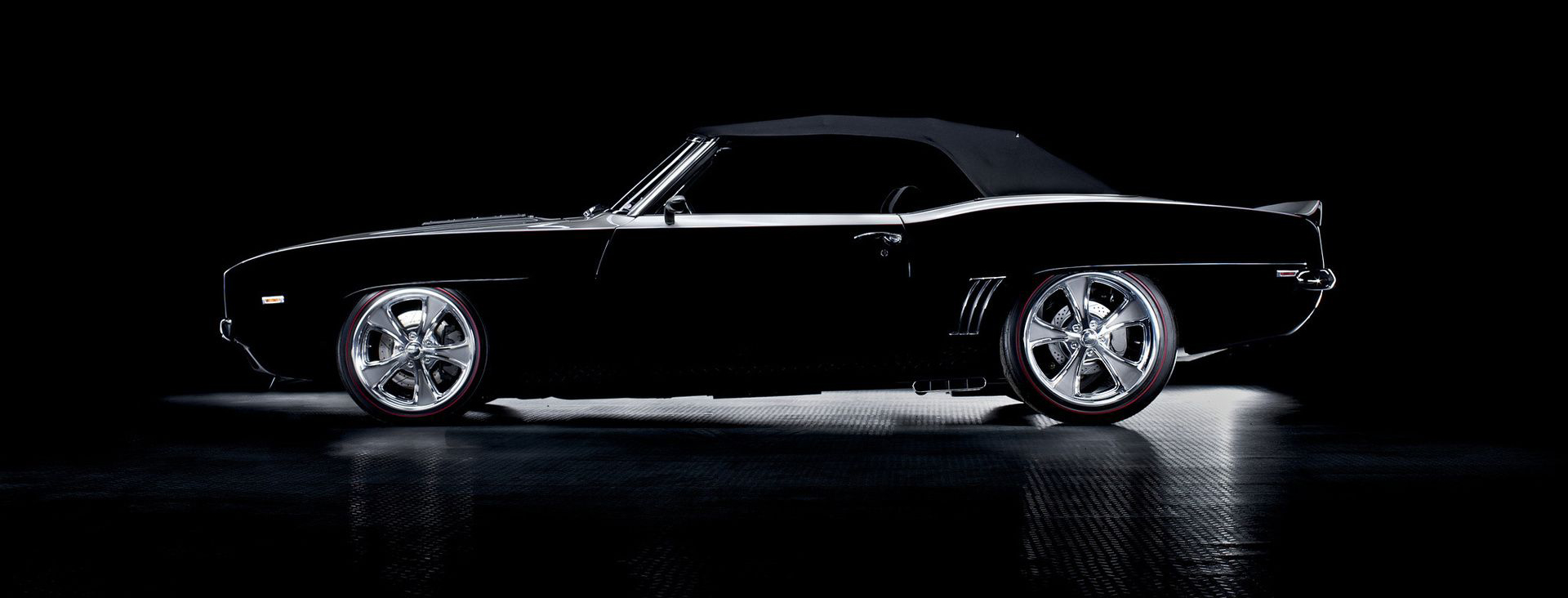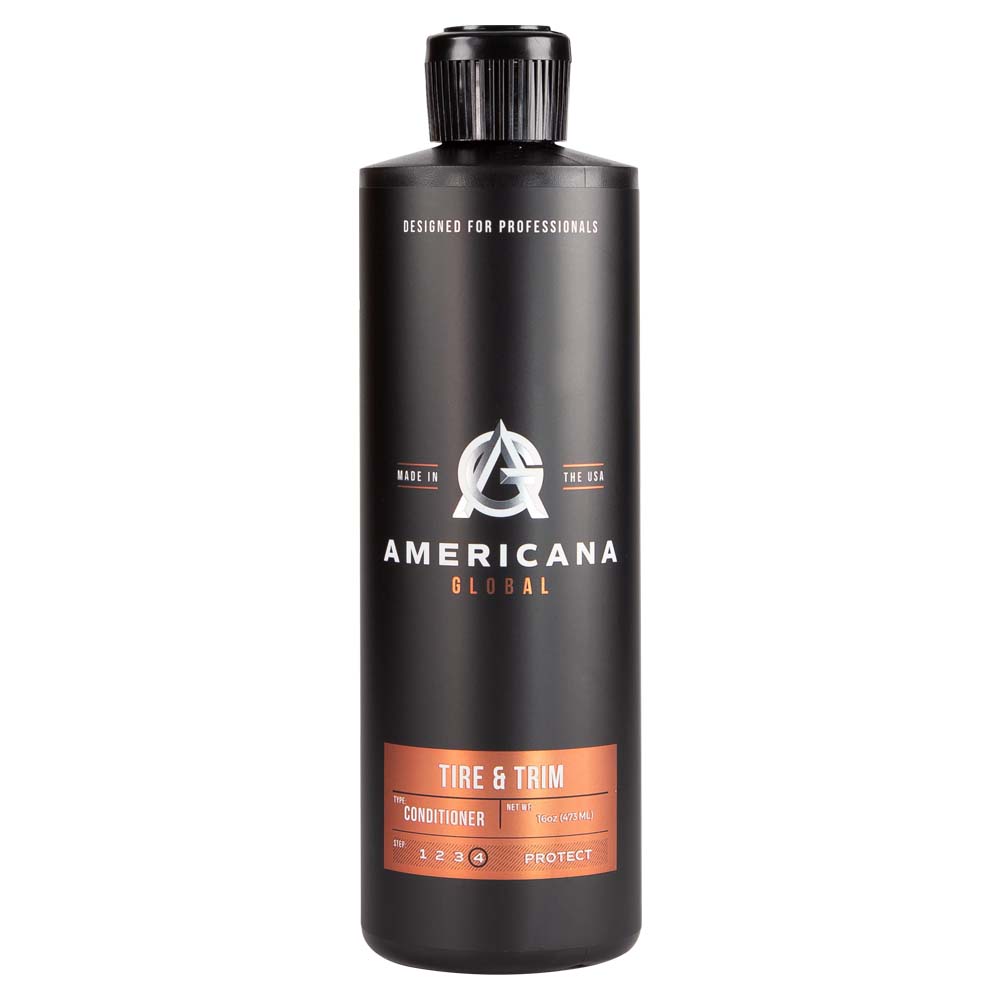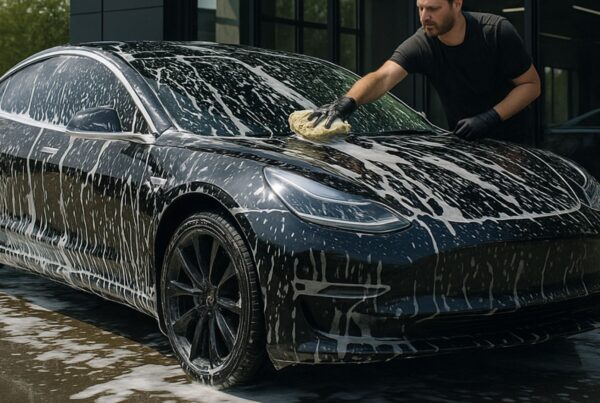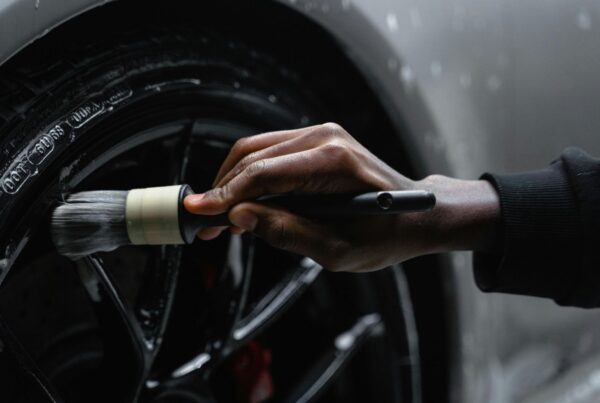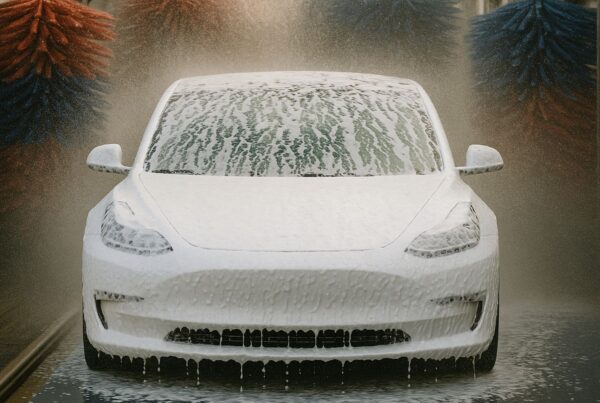Welcome to episode 2 of the Ceramic Pro Car Detailing 101 education series on proper car care techniques. In our first video blog, we provided a general overview of the complete detailing process – from top to bottom, front to back, and everything in between. Now we’re going to dive into one of the first steps – detailing wheels and tires.
There are a few schools of thought on wheel cleaner and products for cleaning the car wheel and tires. First, should this be done with the wheels on the vehicle or should you take them off? Should you wash the wheels and tires with a rim brush or wheel brush first – then detail them later? Is detailing the wheel wells part of this task – or overall cleaning? And finally, are all wheel cleaning agents the same – and should be used on all materials like a steel, alloy wheel, or custom wheels?
Well to be honest, the answers to those questions are 100% in your power. Your level of comfort, time, and ability will determine many of the specifics. But the point of our education and video series is to provide you with the step’s professional detailers use – and let you find a process and technique that fits your situation best.
So – now that we’ve cleared that up – let’s get cracking. Before you read below, take a few minutes to watch the video by Adam Cote to see many of the professional detailer who proudly represent Ceramic Pro detail wheels and tires.
Step 1 – Take Off the Wheel
Anything worth doing is worth doing right. Such is the case when you’re going to detail your wheels and tires. A detailing project involves cleaning and removing 100% of the dirt, road grime, debris, and ‘stuff’ hidden in those nooks and crannies. With a wheel – it’s nearly impossible to accomplish that task with it installed on the vehicle.
So, the first step in detailing a car wheel and tires is to take them off the vehicle. There are a few ways you can go about this:
A) Take them off and detail one at a time (which will take longer to complete the project)
B) Take off one side of the vehicle or same axel at a time.
C) Remove them all and complete everything at the same time.
If you’re going to go with option C – you’ll need 4 individual jack stands to do this safely, and work on a completely flat surface.
If you’re going to do this one wheel at a time, then you can skip to the next step after removing the wheel. For those doing multiple tires and wheels at the same time, here are some helpful safety and organization tips.
- Jack up one wheel at a time using a heavy-duty jack.
- Place a jack stand under the frame, solid differential, or designated jack point on your vehicle.
- Use a breaker bar or star wrench to remove lug nuts. You can also use an impact wrench if desired.
- Place all lug nuts in a cup or bowl.
Before taking them off, use some chalk to mark the location of the tire – use LF for Left Front – RF for Right Front – LR for Left Rear and RR for Right Wheel. Since you’re detailing the tires as well, I’d recommend writing these letters on a center tread block in the middle of your tire.
When you reinstall the tires and wheels, you don’t want to mix them up, as this impacts your tire rotation schedule – and second, it’s likely that wheels previously on the rear may be out of balance. This means the front end will vibrate at higher speeds.
Step 2 – Rinse Off All Standing Debris
Once the wheels have been removed, you’ll need to spray off all standing debris first. This includes any mud, dirt, and especially brake dust. When you do this after removing the wheels from the vehicle, you’ll be able to get inside those hard to reach areas.
You can use a garden hose with spray nozzle or high-pressure water sprayer if you’d like. There is no need to dry them after this first step.
Step 3 – Iron Remover on Wheels
After you’ve removed the wheels the next step is to start the decontamination process. With wheels, the biggest issue is brake dust – which is essentially small particles of iron combined with other particles from the brake pads and rotors. As brakes are applied, friction is created, which literally burns the pads and rotors slightly. This produces ‘brake dust’ which embeds itself onto other metallic components – like wheels.
A high-quality iron remover like Americana Release is comprised of multiple chemicals that break down ferrous materials (like brake dust or what many people have classified as “industrial fallout”). The chemical agents smell awful, (like a rotten egg) – but do a great job melting the brake dust and lifting it from the surface of the wheels.
*Insider Tip – Did you know that the active ingredient in these brake dust or industrial fallout that produces that purple / red activation color is Ammonium Mercaptoacetate or Ammonium Thioglycolate. It’s the same stuff that your Granny used in her hair when she’d get it permed at the hair salon.
*Second Insider Tip: If you’re wheels have a clear coat, ceramic coating, or other protective agent that expedites the task of cleaning the wheel face, skip this step if you’d like. Those products should make it easier to remove debris from a polished wheel or coated wheel.
Here are the steps:
- Make sure the wheels are cool to the touch. Spraying any chemical like a tire cleaner on a warm wheel will cause spotting and may lead to etching on the surface.
- Do NOT do this in direct sunlight. It will accelerate the drying of the chemical and lead to a less than clean wheel.
- Spray the iron remover on the wheels – inside and out – and very liberally.
- Keep spraying until the entire wheel is saturated. It’s not recommended to apply these products onto tires – so be careful when you’re spraying them on the wheels.
- Let the liquid dwell for 3 to 5 minutes. You’ll start to see a purple or red tint coming from the brake dust particles. This is normal – don’t freak out.
For added cleaning and detailing – use a soft tipped detailing brush or a rim detailing brush to lightly agitate the liquid – especially in the lug nut holes or front of the wheels (those tight spots).
Rinse with fresh water or use a rinse-less car wash. We like to use Pink Wipeout Hybrid Car Wash – which is a highly concentrated solution that you mix with fresh water and use a sprayer to apply. It’s a product that is less expensive (when you mix as directed), produces a higher-quality clean, and is better for the environment.
If you don’t have a rinse-less car wash, simply spray off the entire wheel and tire with fresh water.
Step 4 – Degreasing Wheels and Tires
At this point, your wheels might look clean – but what about the tires? This is when it’s time to start on them – by using a high-quality degreaser made to lift dirt and road debris from tires. The product we recommend to our detailers is Americana Breakdown – but you can use a high-quality, pH neutral degreasing spray on your tires and wheels.
- Spray the degreaser along the entire tire, inside, outside, and the entire tread.
- Use a tire brush to agitate the degreaser over the entire surface.
- Let it dwell for 1 to 3 minutes
Rinse off with fresh water or your rinse less car wash. If you really want to reduce the potential of water spotting, use de-ionized water or spot-free water for the final spray down.
Step 5 – Drying and Inspection
At this point, your tires and wheels are as clean as they’re going to get. If your wheels are extra dirty or embedded with a lot of brake dust from the brake caliper, rotors and pads, it’s quite possible you’ll have to complete steps 3 and 4 a few times – to really get the hard-embedded stuff off the surface.
If you’re happy about the look of the wheel surface and tires, you’ll need to dry them. We recommend using compressed air to blow dry the wheels and tires. Using a concentrated nozzle will help you blow the wet stuff out of the tire treads (especially those with a lot of sipes – or those small grooves in the tire that help for wet weather traction).
The compressed air will also help remove water from tight holes or grooves on the wheel finish. Once you’ve air blown the standing water off, use a microfiber towel to complete the drying process.
Step 6 – Tire Dressing
Now we’re going to put the cherry on top of the tire and wheel auto detailing sundae. A high-quality tire dressing will not only help improve the shine and depth of the tires but shouldn’t fling all over the vehicle when it’s applied.
The product we like to recommend is another Americana Global Tire and Trim. It’s a superior tire dressing that is best applied by using a tire brush. You should always avoid applying any tire dressing to wheels. But if you accidentally get some on the wheels – don’t’ panic. Just wipe it off with a clean microfiber cloth.
Follow the instructions of the specific tire dressing you use for optimal results.
*Insider Tip: If you want a brilliant shine, apply the tire dressing, let it dry, and then apply a second coating about an hour later. For those looking for a matte finish, apply it once and let it dry before installing the wheels back on the vehicle.
Speaking of which….
Step 7 – Reinstall the Wheels
The final step is to reinstall your wheels. You’ll want to ensure the tire dressing has dried prior to putting them back on the wheels. When you reinstall the wheels, there are a few important safety tips to remember.
First, NEVER use an impact wrench to tighten lug bolts or nuts. This can and usually will over tighten them – which can lead to warping rotors.
Second, ALWAYS hand tighten lug-nuts till the wheel backing is flush and straight on the hub. Complete this in a star pattern to ensure a straight install.
Third, tighten the lugs using a star wrench or ratchet. Don’t rip them ultra-tight. Always complete your final tighten with a torque wrench – and always at the factory specs.
Lower the vehicle from your jack stands and give the tire a final wipe down with the microfiber towel. And your detailing wheels and tires project is now complete. Stay tuned to our blog, for the next episode of Car Detailing 101 – where we’ll step up the game and talk about washing the exterior of your ride.
How to Simplify Wheel Cleaning and Detailing
Imagine if you could skip most of the steps listed above, spray off the wheels with soapy water and fresh water, and dry off – with an amazing shine and luster. This is possible when you have a professional 9H nano ceramic coating applied to the inside and outside of your wheels.
Ceramic Pro 9H Wheels is a proprietary ceramic coating that is formulated specifically for wheels, including alloy, steel, chrome, and carbon fiber construction. It works by filling microscopic imperfections found in all porous materials – hardens, and leaves an ultra-smooth and flat protective shield on top of the material. It makes the wheels very hydrophobic, meaning that water, dirt, brake dust, debris, road grime, and other sticky stuff is less likely to adhere to the wheels. Brake dust simply sits on top and is easily washed away.
If you’d like to receive a free estimate for having your wheels protected by Ceramic Pro 9H, click the button below.


